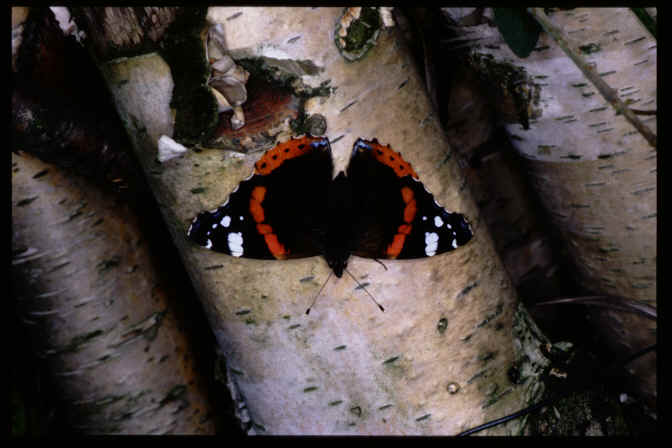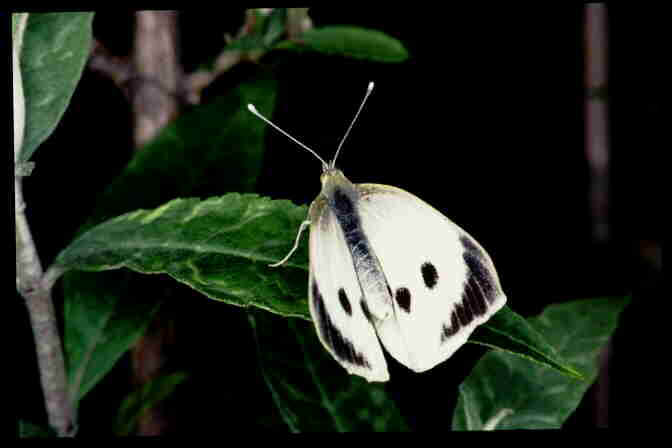


Dorsal
Lateral
Reflectance
Temperature |
| Even though butterflies and moths are ectothermic, so
they are not able to maintain a constant body-temperature, the temperature of their body
is often many degrees higher than the temperature of the surrounding air. This is a
consequence of the fact that butterflies and moths do regulate their body-temperature. Flight is essential for finding mates, food, new habitats and to escape from predators. Flight is dependent on the contraction of the flight muscles, which have the capacity to function over a broad range of temperatures. But when muscles are warm, less energy is used in comparison with colder muscles. Warm muscles are also capable of faster contraction. Butterflies and moths regulate the temperature of their body in a different way. This is already visible by the differences in wing-structure between butterflies and moths. Butterflies often have a bigger wing surface than moths. Butterflies use the sun, by basking they obtain solar radiation and use it to elevate their body temperature. Butterflies use three ways of basking, usually described as: lateral, dorsal and reflectance. The incoming solar radiation is passed as energy to the body, thereby increasing the body temperature. |
|
|
|
Dorsal |
Lateral |
Reflectance |
| During the night moths can not use solar radiation to elevate their body temperature, they regulate their body temperature in a different way. To warm up, moths activate their flight muscles. The activation is such that antagonistic muscles muscles work against one another, producing heat without much wing movement other than small, rapid vibrations which looks like shivering. The body of moths is covered with "heat insulating hairs". A secondary effect of these hairs is that the ultrasonic squeaks produced by bats are absorbed. The echo-navigation system bats use to locate prey is less effective by hairy moths. |
|
Body covered with "heat insulating hairs" |